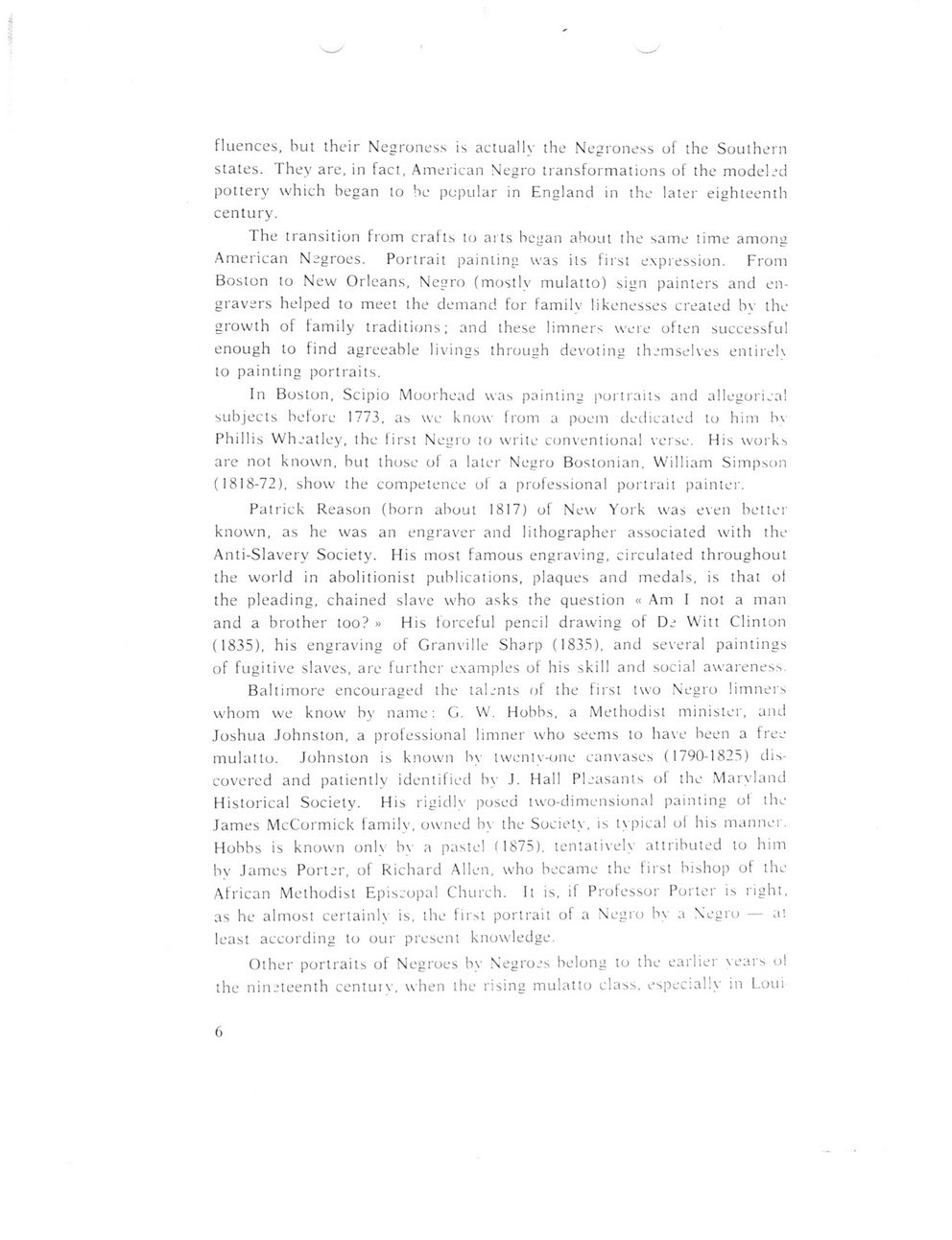This text was obtained via automated optical character recognition.
It has not been edited and may therefore contain several errors.
fluences, hut their Negroness is actually the Negroness of the Southern states. They are, in fact, American Negro transformations of the modeled pottery which began to be popular in England in the later eighteenth century. The transition from crafts to arts began about the same time among American Negroes. Portrait painting was its first expression. From Boston to New Orleans, Negro (mostly mulatto) sign painters and engravers helped to meet the demand for family likenesses created by the growth of family traditions; and these limners were often successful enough to find agreeable livings through devoting themselves entireK to painting portraits. In Boston, Scipio Moorhead was painting portraits and allegorical subjects before 1773, as we know from a poem dedicated to him by Phillis Wheatley, the first Negro to write conventional verse. His works are not known, but those of a later Negro Bostonian, W'illiam Simpson (1818-72), show the competence ol a professional portrait painter. Patrick Reason (born about 1817) of New York was even better known, as he was an engraver and lithographer associated with the Anti-Slaverv Society. Mis most famous engraving, circulated throughout the world in abolitionist publications, plaques and medals, is that ol the pleading, chained slave who asks the question ? Am I not a man and a brother too? ? His forceful pencil drawing of De Witt Clinton (1835), his engraving of Granville Sharp (1835), and several paintings of fugitive slaves, are further examples of his skill and social awareness. Baltimore encouraged the talents of the first two Negro limners whom we know bv name: G. W'. Hobbs, a Methodist minister, and Joshua Johnston, a professional limner who seems to have been a free mulatto. Johnston is known by twenty-one canvases (1790-1825) discovered and patiently identified by J. Hall Pleasants ol the Maryland Historical Society. His rigidly posed two-dimensional painting ol the James McCormick lamilv, owned by the Society, is typical ol his manner. Hobbs is known onlv bv a pastel (1875), tentatively attributed to him bv James Porter, of Richard Allen, who became the first bishop of the African Methodist Episcopal Church. It is, if Professor Porter is right, as he almost certainly is, the lir^t portrait of a Negro by a Negro ? at least according to our present knowledge. Other portraits of Negroes by Negroes belong to the earlier years ol the nineteenth century, when the rising mulatto class, especially in Loui 6

Barthe, Richmond American-Negro-Art-05